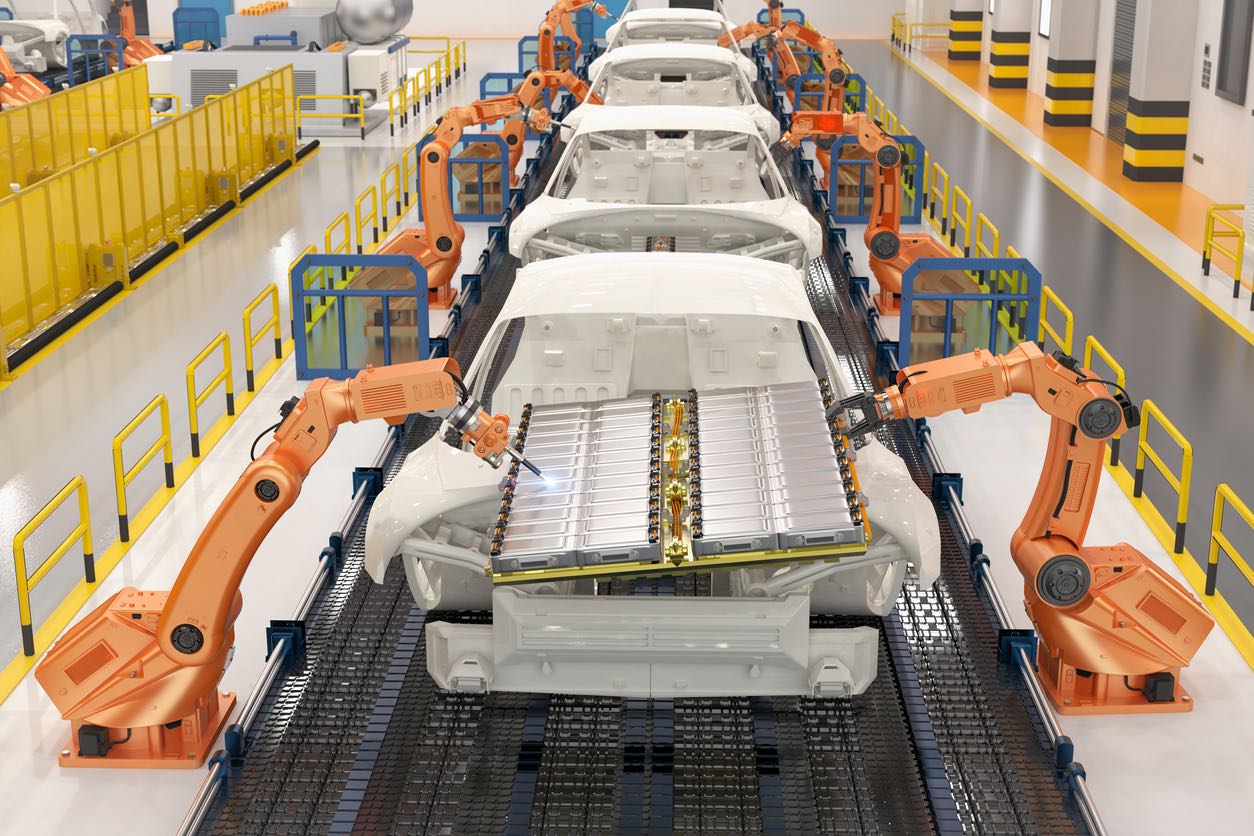Thanks to augmented reality and virtual reality, the entire process for automobiles from design, production, sales, and marketing are all improving. Both AR and VR are useful for the maintenance of the vehicles, training for the workers in the automotive industry, showrooms for the new vehicles, and creating safer vehicles.
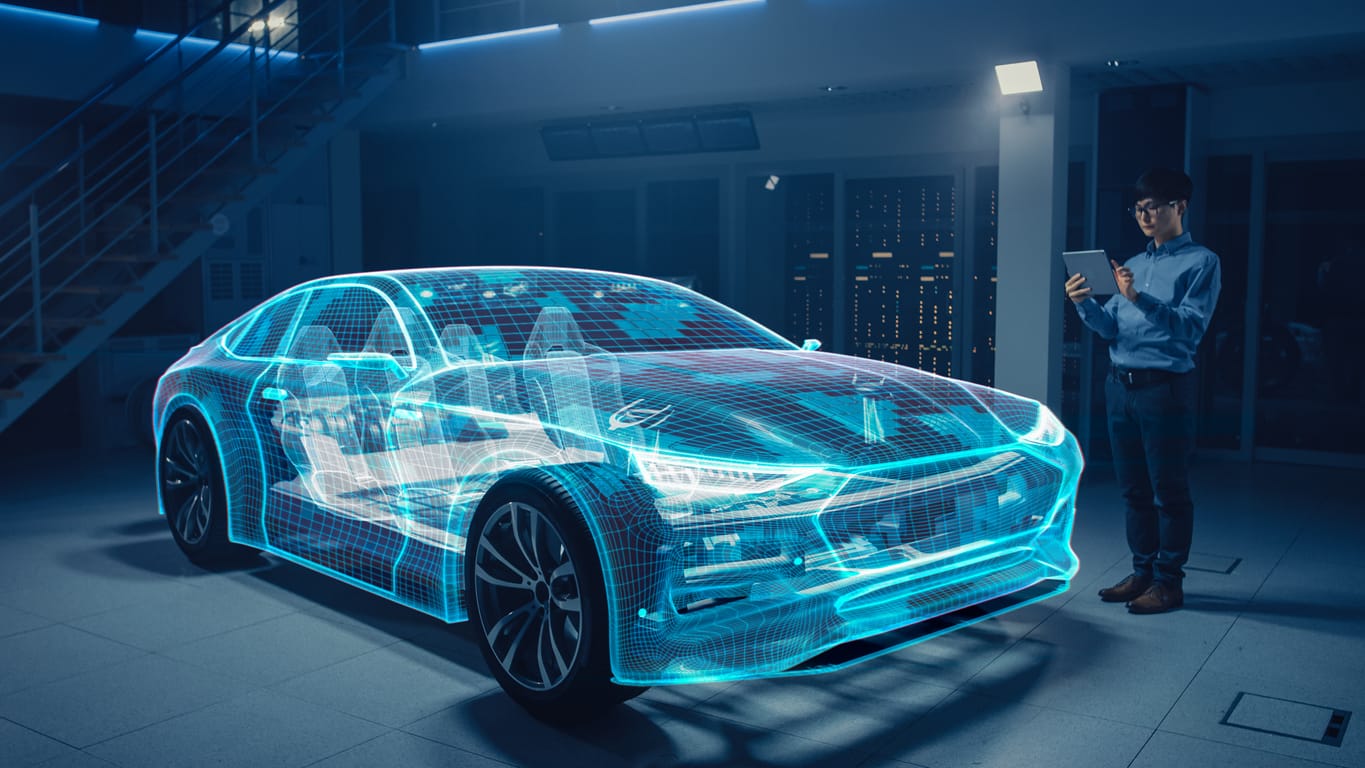
Whenever an issue appears on a drivers dashboard, the driver would typically just take it to a mechanic to work on the problem. Augmented reality however has recently made it possible for owners to scan a barcode on the dashboard, and receive a full explanation of what went wrong. Not only will it identify the problem, but the AR can also be used as apps or virtual assistants that could act as an aid for troubleshooting and even repairing the issue.
Thanks to Virtual Reality, both engineers and labor workers are able to use VR tools and simulators to ensure they receive proper training so the workers receive more efficiently and create a safer training environment. A great example of this would be to use VR to train operators, which eliminates the need for expensive equipment for the training. The training allows the operators to gain knowledge of how to repair vehicles without having to actually remove the parts by using the simulators.
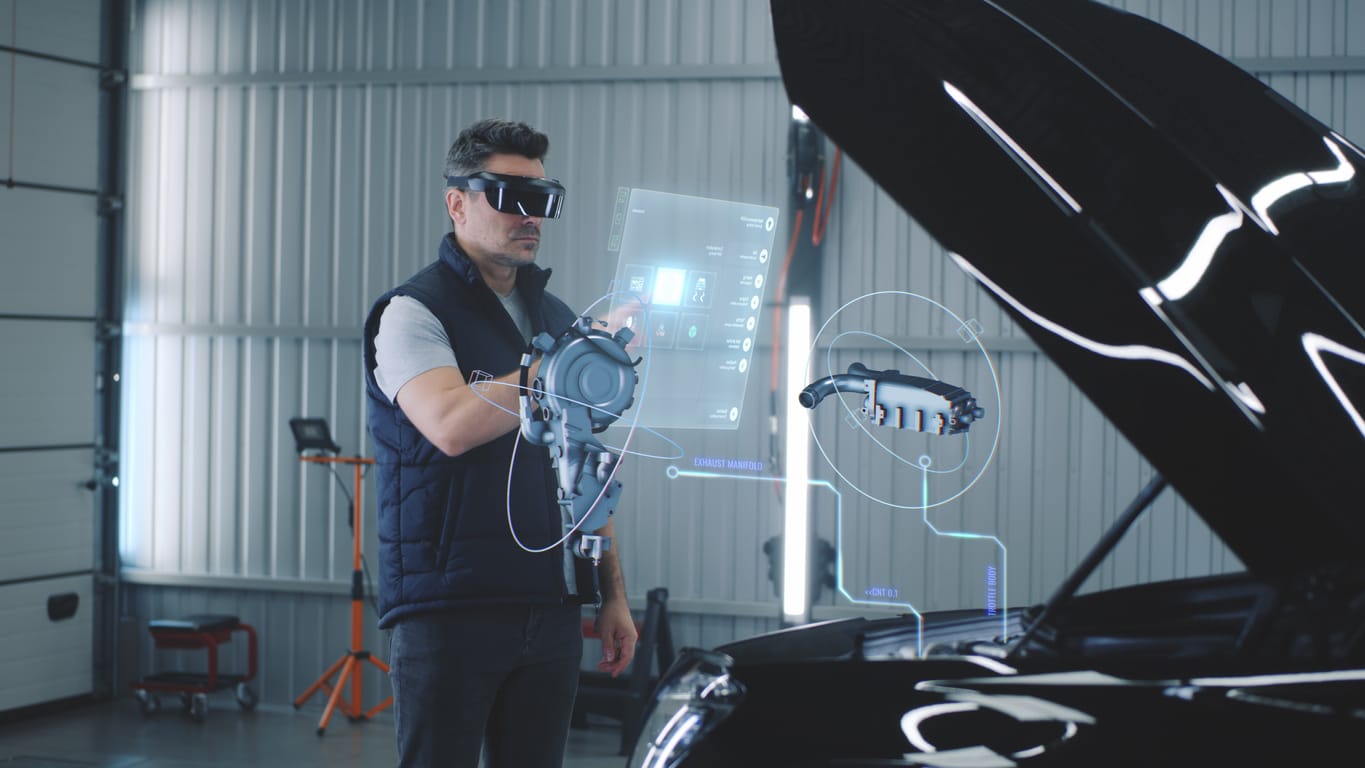
The opportunity for consumers to enter a virtual showroom is beyond beneficial to them. They are able to view every make and model that the company offers. They are not only able to view each make and model, they are able to add different options to it, while changing the vehicle’s color with the click of a button. This ensures that the consumer is completely satisfied with their vehicle that they are buying.
The safety features of the newer car models are improving thanks to augmented and virtual reality. By implemented technology like AR-enhanced rear-view mirrors that are able to identify a blind spot threat and even reflect a live video stream of it into the rear-view mirror is just one of the many safety features thanks to AR and VR.
Not only are the safety features improved, the training for new drivers is much more efficient through VR and AR. New drivers are able to undergo training through the different technologies and take the actual room when they feel they are fully prepared.
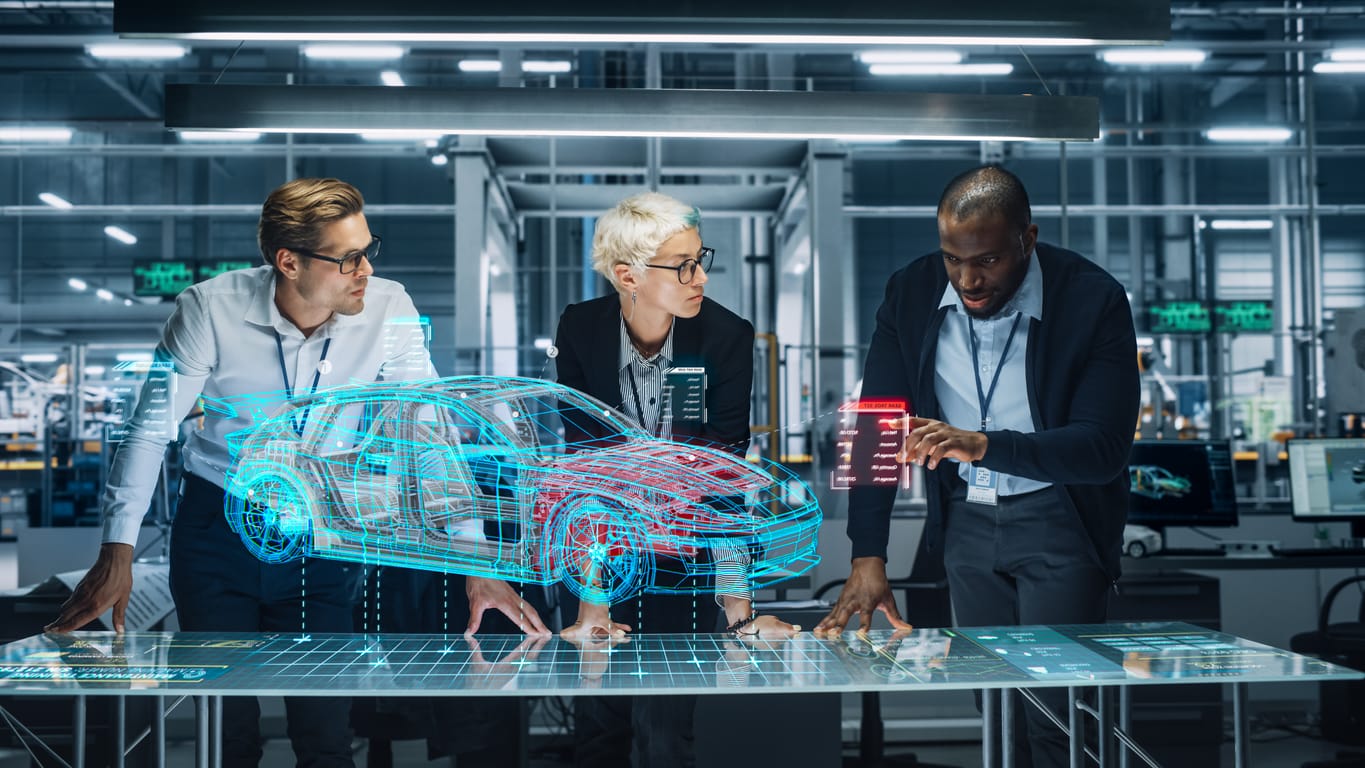
Even designing the vehicles employ the use of virtual and augmented reality. For example, automakers are able to use VR from the perspective of people who are shorter or taller than the average person. This one example just shows how designers are able to assess the various designs for their vehicles before making them. Furthermore, they can use augmented reality to establish collaborative work visible to all participants and make changes during their session.
Great news for designing electric vehicles, the bench testing offers an alternate method thanks to virtual reality. Electric vehicle manufacturers are able to test a new models electronic system without relying on any hardware, which is both cheaper and easier to work with. In order to experiment with the design, companies build a digital twin of the car, which lowers the development costs of the designing period of the vehicle.
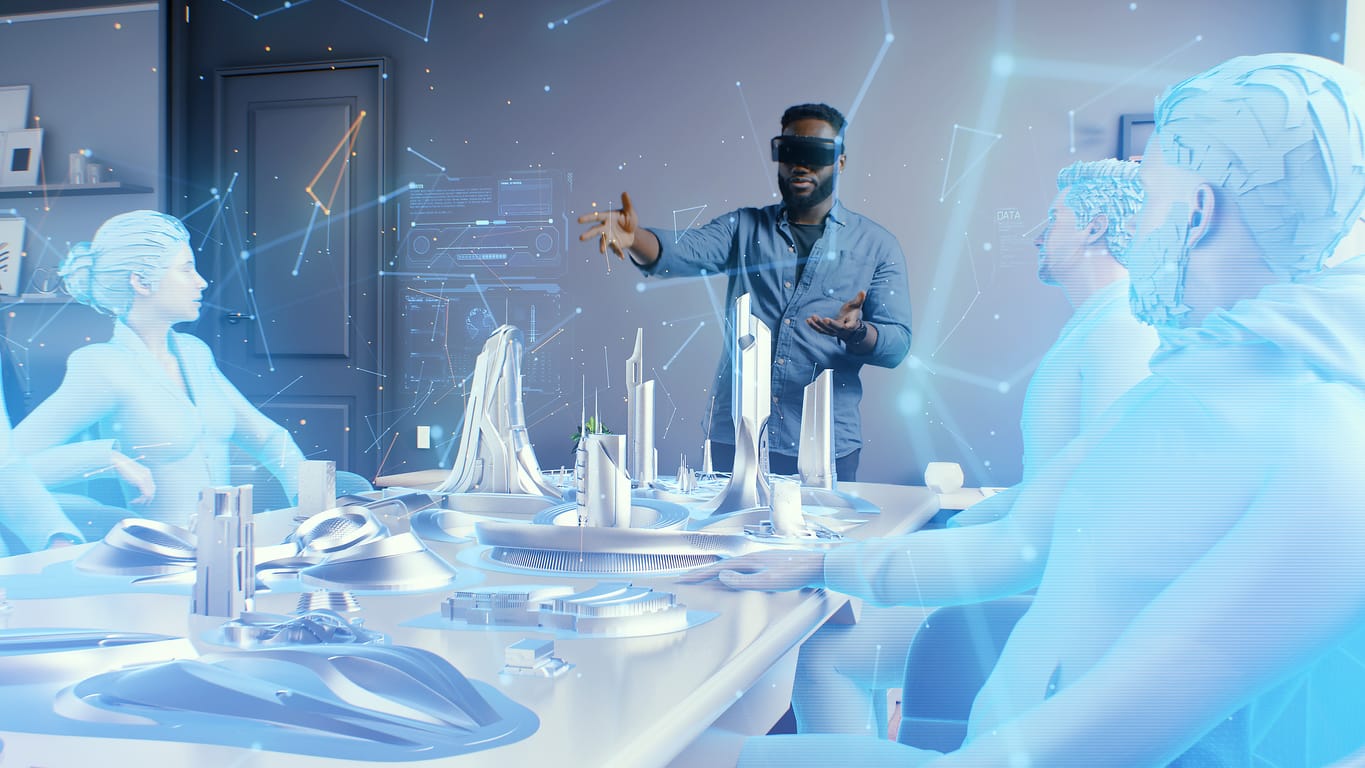
Thanks to augmented reality, the assembly of cars is much more efficient, eliminating many missteps that could occur, which would lead to substantial losses. The AR technology allows workers on the assembly line to receive instructions and technical data on their AR glasses display. By being able to have the information right in front of their eyes on top of their equipment, it provides assistance in choosing the correct spare parts and tools, and even live advice by step-by-step instructions. The AR and VR technology actually increases accuracy to 96% and work could even be 30% faster.
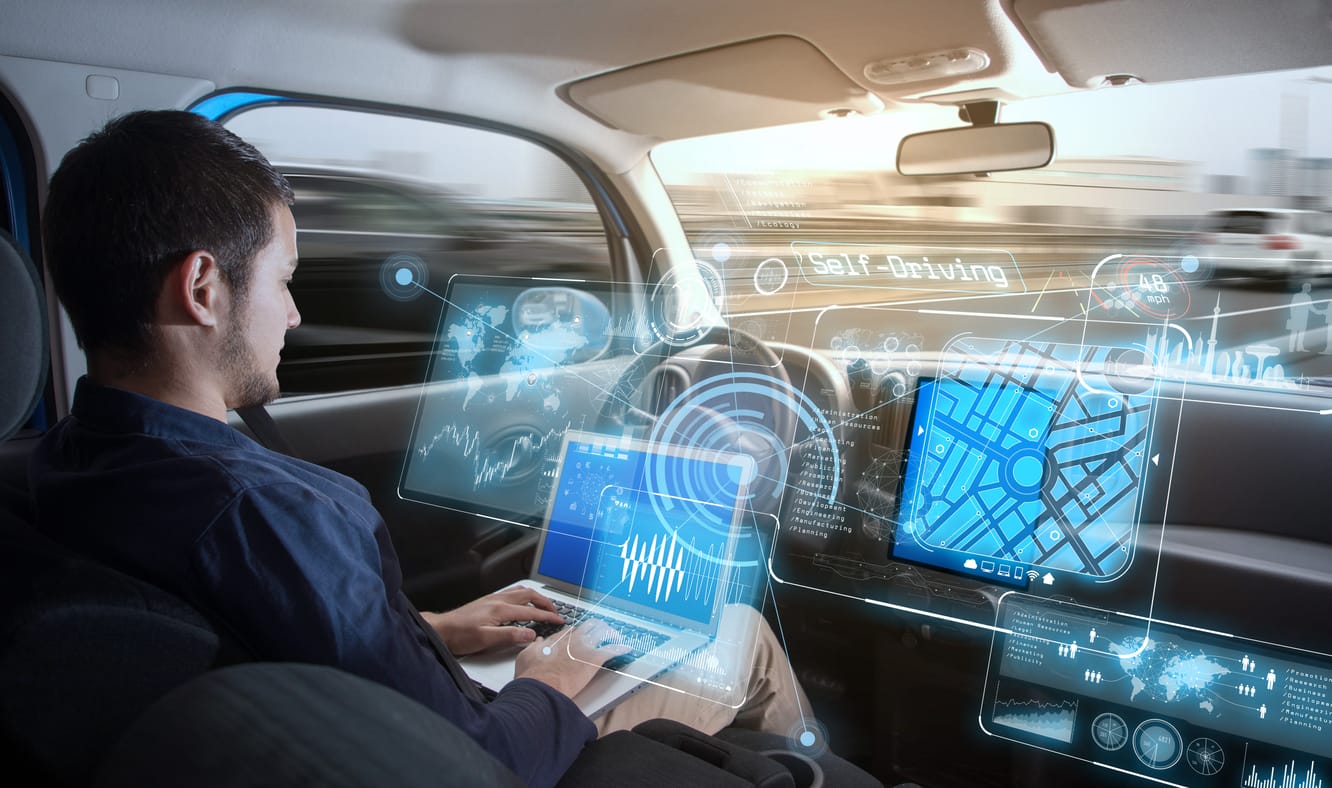
It is estimated that the global ecosystem for AR and VR in the automotive industry was recently valued at $195.7 million in 2018, and is projected to rise to $1.216 million by 2023, which is an increase of 48%. The automotive industry uses both augmented and virtual reality in many areas, but manufacturing, designing, creating safer vehicles, maintenance, employee training, and even virtual showrooms. It’s safe to say that this technology will be in the automotive industry for years to come.

